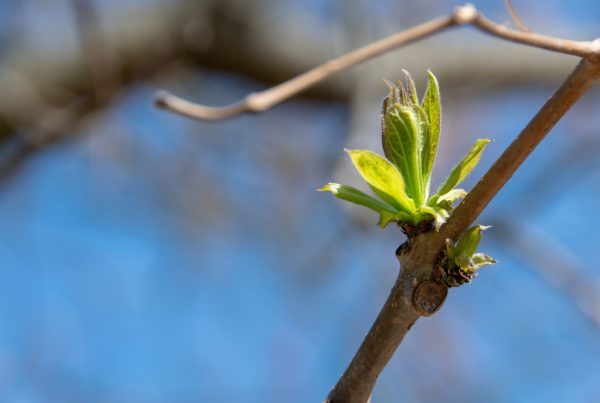The yellowwood tree (Cladrastis kentukea) provides year-round interest, with fragrant blooms in spring, colorful foliage in spring, summer and fall, and showy seedpods that hang on during winter. The yellowwood tree provides ample shade and is an effective specimen tree. One of the more rare trees found in Wisconsin, it is native to the southern Appalachian Mountains.
The yellowwood tree is named for the color of its heartwood, which is dull
to brilliant yellow when freshly cut. The tree’s smooth, slender stems are
a lustrous reddish-brown, while older branches and the trunk are smooth and gray. The leaves emerge yellow-green in spring and turn bright green in summer. In fall, the foliage turns yellow, gold, or copper before dropping. The tree’s white flowers resemble those of pea plants and grow in long clusters. Whitish-gray, flattened seedpods develop in fall.
Yellowwood
Size: 30-40′ height; 40-50′ spread
Zones: 4 through 8
Pruning: Required for strong structure
Pest/Disease: No major concerns
Did you know?
- Gun makers once used the wood for gun stocks, while settlers in the Appalachians made dye from the tree’s root bark.
- Until 1999, one of the state’s largest yellowwoods lived in the courtyard of the Adams Residence Hall on the University of Wisconsin campus.
- The tree tends to flower more abundantly every second or third year.
- Bees are attracted to the flowers, but birds and other wildlife do not eat the seeds.
- Summer is the best time to prune yellowwoods to avoid excessive bleeding.




